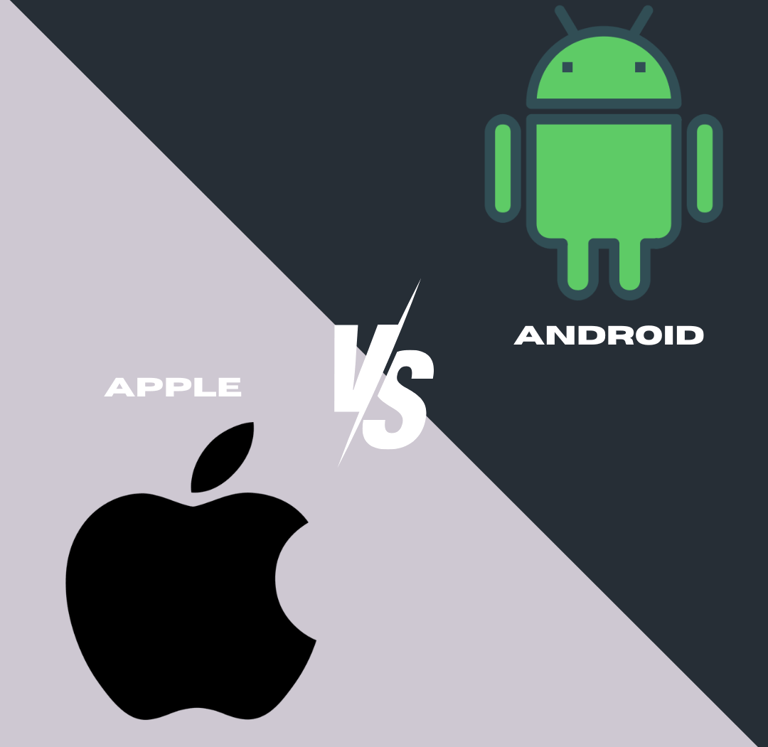Android vs Apple: How File Sharing Evolved in 2025 (and Why Android Finally Catches Up)
In 2025, Android has bridged a crucial gap with Apple in file-sharing technology. Discover how innovations and European regulations have reshaped the landscape.
EN - IPHONE AND APPLE PRODUCTSEN - ANDROID SMARTPHONES
Quebec Test
2/4/20252 min read


Introduction
For years, Apple dominated wireless file sharing with its exclusive AirDrop system, seamlessly integrated within the iOS ecosystem. However, in 2025, Android has quietly revolutionized its approach, finally catching up in key areas like interoperability and ease of use. How did Google and its partners manage to compete with Apple? Let’s analyze the technological advancements, regulatory impact, and shifting user expectations.
1. AirDrop vs Quick Share: The Battle of Ecosystems
Apple has long kept AirDrop locked within its ecosystem, allowing instant transfers between iPhones, iPads, and Macs. But in 2025, Quick Share (Android) and Nearby Share (Google) have finally broken this exclusivity, thanks to:
Cross-platform compatibility: Transfer files between Android smartphones, Windows, and even iOS (under certain conditions).
Optimized speed: With Wi-Fi Direct and Bluetooth Low Energy, transfers now reach up to 5GB in less than 30 seconds.
User-friendly design: The interface takes cues from AirDrop, featuring frequent contact suggestions and enhanced permission management.
Why Does This Matter?
Interoperability has become a major concern, especially after European regulations demanded the opening of closed ecosystems. While the EU pressured Apple to make AirDrop more accessible, Android anticipated these changes by natively integrating universal protocols.
2. European Regulations: A Catalyst for Android
In 2025, the EU intensified its efforts to dismantle tech monopolies. The results:
Apple was forced to adapt AirDrop: European users can now share files with Android devices, though functionality remains restricted outside the EU.
Android leveraged openness: By collaborating with manufacturers like Samsung and Xiaomi, Google standardized Quick Share, making it compatible with over 2 billion devices.
Did You Know?
iPhone users in Europe can now send photos to a Galaxy Z Flip 6 without a third-party app—a historic first.
3. Technical Innovation: Android Bets on AI and Security
To dethrone AirDrop, Android has integrated groundbreaking features:
Context-aware AI: The system automatically detects file types (photos, videos, documents) and suggests compatible apps on the recipient’s device.
Enhanced encryption: Transfers use an End-to-End Encryption (E2EE) protocol similar to Apple’s, with optional biometric authentication.
Battery efficiency: Unlike AirDrop, Quick Share consumes 30% less battery during large transfers, according to tests.
4. The Remaining Challenges for Android
Despite its progress, Android still faces some hurdles:
Standardizing the user experience: Some manufacturers add extra software layers that complicate Quick Share’s functionality.
Convincing Apple users: Many still aren’t aware that Android-iOS file sharing is possible due to limited communication efforts.
FAQ (Optimized for Featured Snippets)
Q: Is Android now as simple as iOS for file sharing?
A: Yes! With Quick Share, transfers are just as fast and secure as AirDrop, even across different brands.
Q: Did the EU force Apple to open AirDrop?
A: Partially. AirDrop remains limited outside Europe, but EU regulations accelerated the adoption of universal standards, mainly benefiting Android.
Q: Which smartphone is best for file sharing in 2025?
A: High-end Android devices (Galaxy S24, Pixel 9) rival the iPhone 16, but the best choice depends on your existing ecosystem.
Conclusion
In 2025, Android has proven that innovation and openness can coexist, offering a viable alternative to AirDrop. While Apple still holds an advantage with seamless device integration, Google has achieved a crucial milestone: making file sharing universal, fast, and secure. A win for all users—including those on iOS
